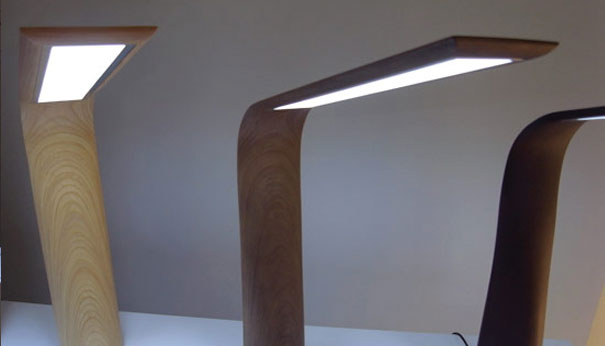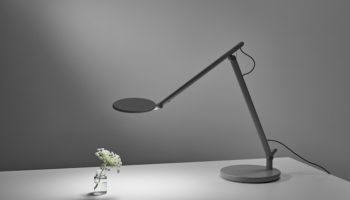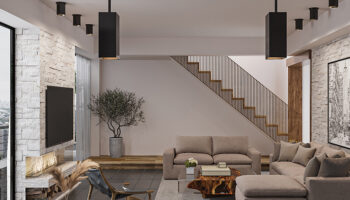Moonbird Takes Flight Without Moving From Your Desk
As a writer, I like to think of myself as especially immune to the evils of cliché, the banalities of stereotypes, but every so often, as the saying goes, it’s a cliché because it’s true. In regards to Japanese designers, I quite often take recourse to pervasive notions about balance and symmetry, about excellent craftsmanship, about spare execution that evokes a certain calm. Such was the case with the recent Sleepy Lagoon by Kazuhiro Yamanaka; likewise, Yukio Hashimoto’s Moonbird—another piece with an organically-inspired aesthetic—evokes a marked simplicity characteristic of the far East.
Moonbird. Hand-carved by Hashimoto.
Moonbird is hand-carved by Hashimoto out of beech plywood. Its source of illumination is a cleverly-integrated grid of some 28 quarter-watt LEDs. Its material is eco-friendly. And its aesthetic is both familiar and strange. It’s probably the only lightpiece I’ve ever seen that makes use of a reverse-cantilevered design, a choice that makes it extraordinarily spare and self-contained. Starting from a cylindrical base, Hasihmoto sculpts the lamp from bottom to top, gradually eschewing excess material to end with the ultra-slim “head” (or “beak,” if you go with the bird metaphor).



Moonbird is currently available only via personalized request to Hashimoto, and thus carries the substantial price tag you might expect from such an arrangement. Accordingly, some have criticized it for being exclusionary. And so it is, though I disagree that the narrow market is legitimate grounds for critique (and anyway, a commercial incarnation is coming soon). As with many pieces that span the divide between art and design (see Zaha Hadid’s Orchis and Ron Arad’s Puntiamo al Cuore, or nearly anything from Design Miami/Art Basel, for that matter), Moonbird is a stunning example of highly-functional art. It’s also a compelling case of art imitating life/nature, as anyone who’s seen a Sandbill Crane can testify. The lamp effectively captures the feel of a remote isle, a still night, a meditative bird spied on the crest of a sandy hill. Says Hashimoto, “I designed the lamp with the image of a bird perched silently under the moonlight.”
Via Designboom




Leave a Reply